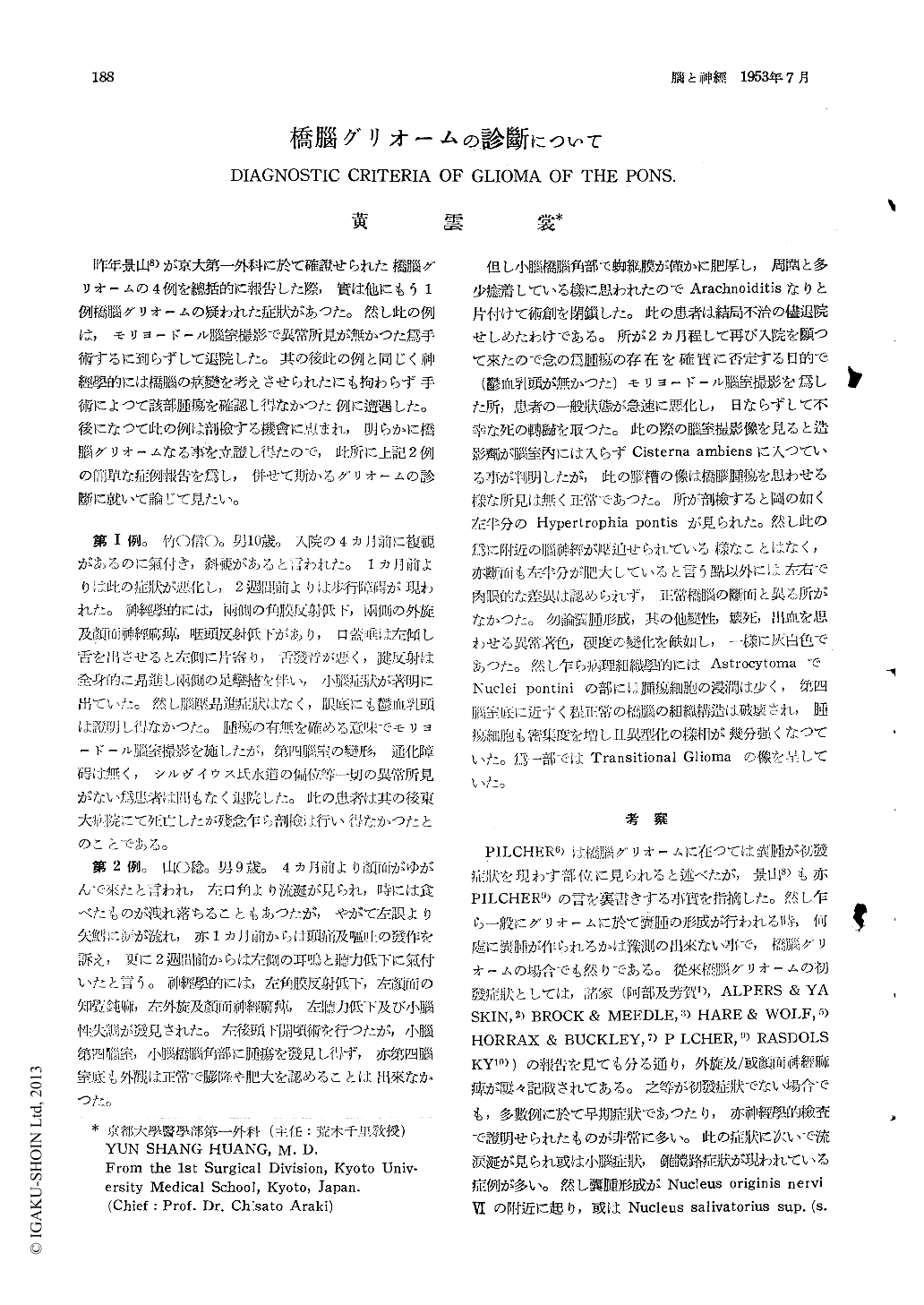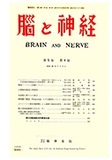Japanese
English
- 有料閲覧
- Abstract 文献概要
- 1ページ目 Look Inside
昨年景山8)が京大第一外科に於て確證せられた橋腦グリオームの4例を總括的に報告した際,實は他にもう1例橋腦グリオームの疑われた症状があつた。然し此の例は,モリヨードール腦室撮影で異常所見が無かつた爲手術するに到らずして退院した。其の後此の例と同じく神經學的には橋腦の病變を考えさせられたにも拘わらず手術によつて該部腫瘍を確認し得なかつた例に遭遇した。後になつて此の例は剖檢する機會に恵まれ,明らかに橋腦グリオームなる事を立證し得たので,此所に上記2例の簡單な症例報告を爲し,併せて斯かるグリオームの診斷に就いて論じて見たい。
On the assumption that a glioma of the pons is a subependymal cell plate glioma originating from the "cell rests" in the floor of the fourth ventricle and near the midline, it would readily be understood why paresis of the abducens nerve (s) and/or weakness (or spasm) of the facial nerve (s) (double vision, squint, facial spasm and asymmetry of the face) should appear in a great majority of the cases as initial or early sings. And the chronology of the appearance of symptoms in the glioma under consideration will theoretically be in the order given as follows: paresis of the abducens and/or facial nerves (or facial spasm), weakness (or spasm) of the masseter muscle (s). drooping of the saliva and/or abnormal lacrimation, disturbance in the sense of taste, paresis of the sensory trigeminal nerve (s) and its nucleus, signs of dysfunction of the eighth cranial nerve (s) and its nuclei (ringing ears, reduction in the acoustic acuity, etc.), sings of cerebellar involvement and pyramidal signs. However, the signs of involvement of those nerve fibers, which have a decussation, such as the central trigeminal lemiscus, the trabezoid body, the pathways to and from the cerebellum, etc., may possibly appear earlier than the order described above. Neurologic examination will usually disclose multiple involvement of the cranial nerves (nuclei) and cerebellar signs on one side or bilaterally and contralateral (or bilateral) pyramidal signs. But signs of increased intracranial pressure (choked discs) may often be absent.
Not only symptomatologically, the tegmen of the pons was seen, in most cases of gliomas of pons hitherto reportee by various authors and of our own, to be either completely destroyed or, at least, invaded by the tumor mass; a fact which seems to justify the hypothesis that a glioma of the pons is a subependymal cell plate glioma.
Furthermore, by the analogy in the age incidence of a cerebellar astrocytoma with that of a pons-glioma may it be conclusively explained that the latter tumor is a kind of subependymal cell plate gliomas, since the former, which can be considered as a subependymal cell plate glioma in the roof of the fourth ventricle, occurs most frequently in children under the age of ten years while this is likewise the case in a glioma of the pons.
In summarizing, a diagnosis of glioma of the pons can easily and unmistakably be made when the age of the patient, the initial or early signs, the chronology of the appearance of symptoms and an absence of choked discs and other neurologic findings are carefully taken into consideration as (differential-) diagnostic criteria.

Copyright © 1953, Igaku-Shoin Ltd. All rights reserved.


